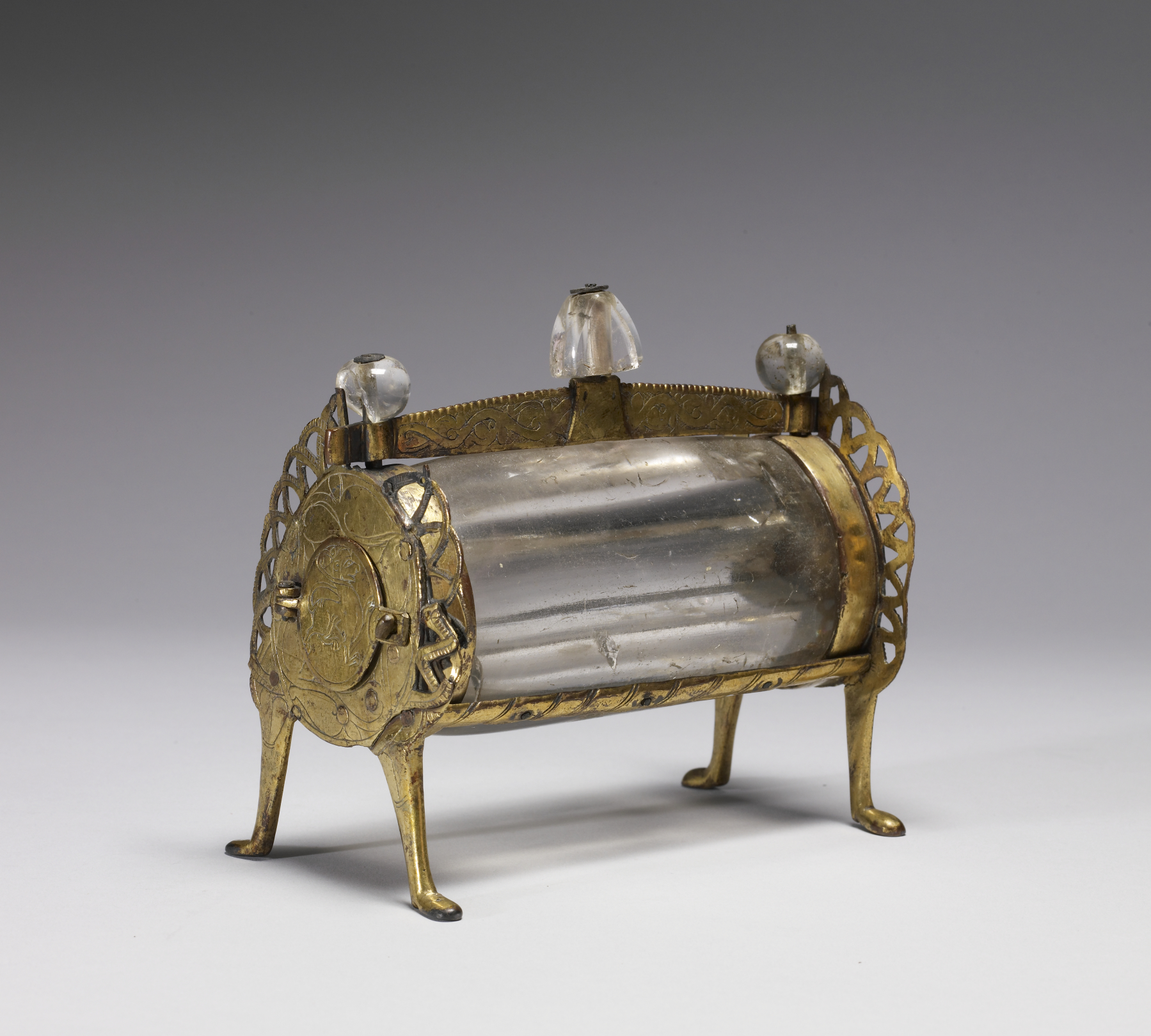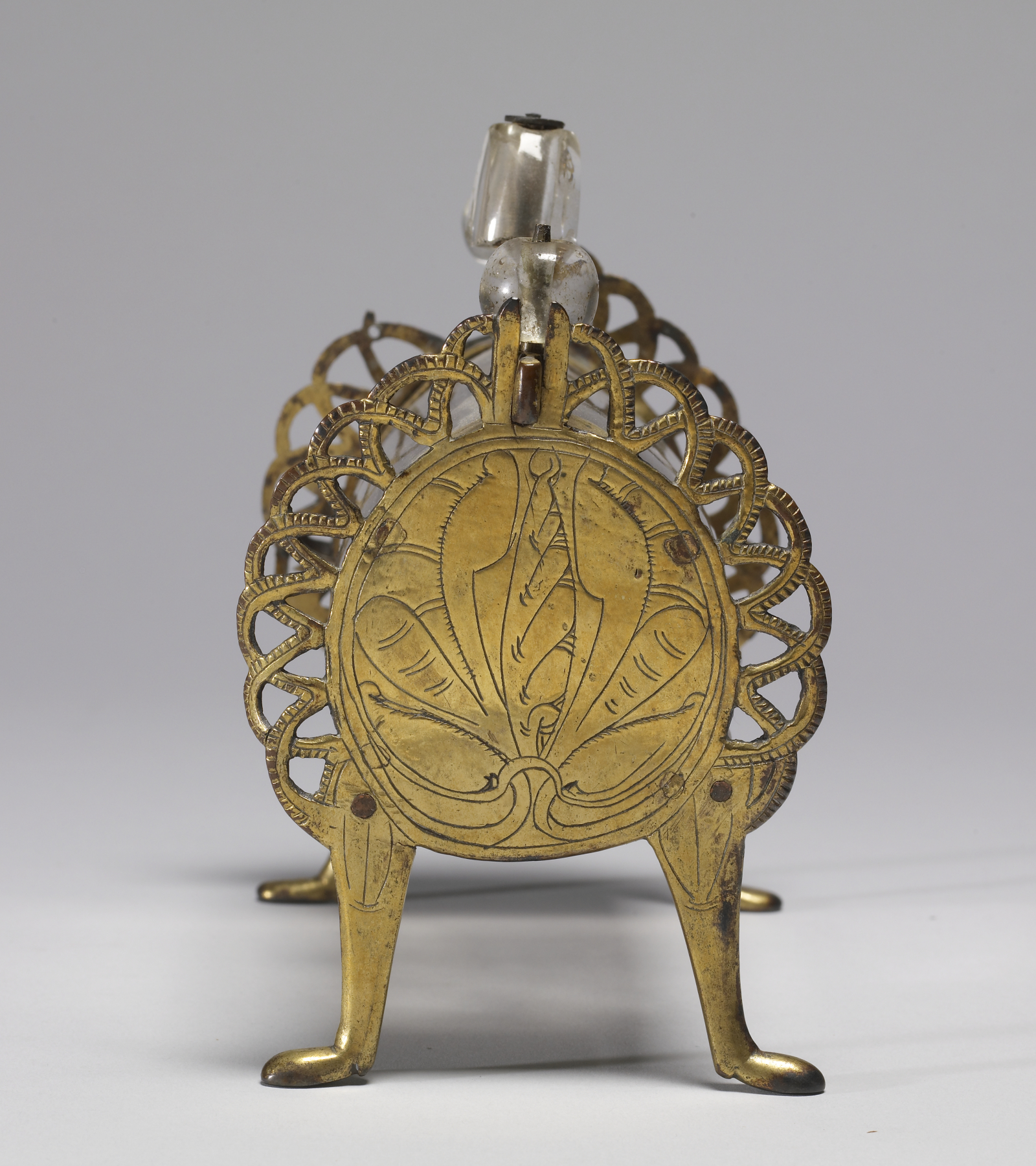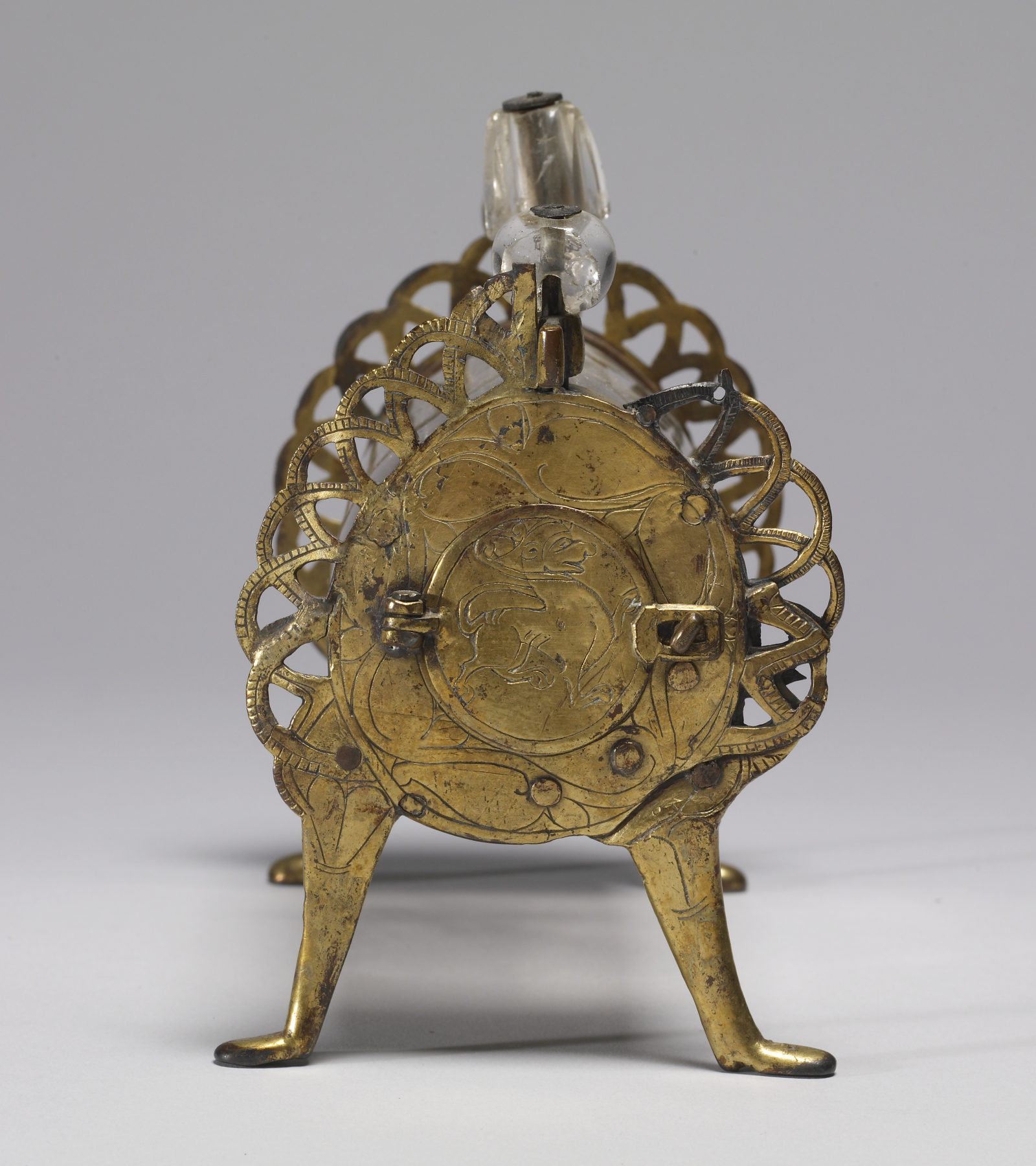Crystal Reliquary
(Medieval Europe )
This barrel-shaped reliquary is formed of a large, cylindrical piece of crystal bored down the middle to create a narrow compartment for a relic. The rock crystal makes this a type of monstrance (display reliquary) that presents the relic for veneration visibly rather than keeping it hidden from view as in an enamel, church-shaped shrine.
Provenance
Provenance (from the French provenir, 'to come from/forth') is the chronology of the ownership, custody, or location of a historical object. Learn more about provenance at the Walters.
Tycon and Smith, Paris, by purchase; Henry Walters, Baltimore, 1929, by purchase; Walters Art museum, 1931, by bequest.
Exhibitions
| 2010-2011 | Treasures of Heaven. The Cleveland Museum of Art, Cleveland; The Walters Art Museum, Baltimore; The British Museum, London. |
| 1984-1985 | Reliquaries and Ritual: Medieval Objects of Devotion. The Walters Art Gallery, Baltimore. |
Geographies
Germany, Rhineland (Place of Origin)
Measurements
H at top of center finial: 5 11/16 x W: 6 5/8 x D: 3 3/4 in. (14.5 x 16.8 x 9.5 cm)
Credit Line
Acquired by Henry Walters, 1929
Location in Museum
Accession Number
In libraries, galleries, museums, and archives, an accession number is a unique identifier assigned to each object in the collection.
In libraries, galleries, museums, and archives, an accession number is a unique identifier assigned to each object in the collection.
53.8






